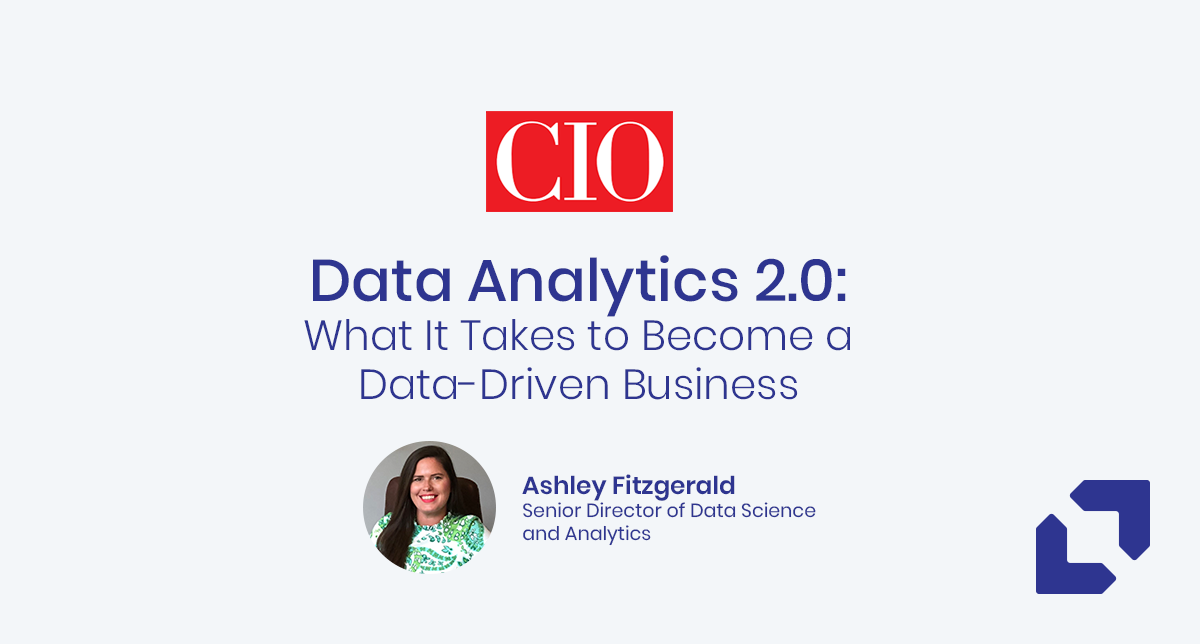Ashley Fitzgerald, senior director of data science and analytics with Appnovation, talks with CIO.com to explore how visual dashboards can provide clear insights and provide valuable and accurate direction for business leaders, forming a foundation for data-driven products and services.
By: Lafe Low
Businesses typically gather an overwhelming volume of data from myriad sources. The critical challenge is to present a deep and thorough analysis of that data in clear and comprehensive visual dashboards.
Visual dashboards fueled by API connections can continuously update data to provide clear insights to business and data analysts. These insights not only provide valuable and accurate direction for business leaders, but also form a foundation for data-driven products and services.
“By having a single source of truth and as much automation of data collection as possible, analytics resources can be focused on insights and recommendations, which is far more valuable to the business,” says Ashley Fitzgerald, senior director of data science and analytics with Appnovation.
While there have been and continue to be significant technological advancements in the realm of data analytics, perhaps the most significant advancement has been the collective mindset around data science as a business initiative.
“The most significant recent advancement in data analytics is the mindset and awareness of its utility,” Fitzgerald says. “Stakeholders are aware they need to incorporate analytics into the fabric of their business, even though they sometimes don’t know exactly where or how to do that. We help organizations bring their insights to life through data visualization. For example, a marketing team can analyze how its activities are turning into engagements, and then how those engagements are resulting in sales. Equally important, they can see which engagements are not driving sales and get a clear picture of which marketing activities are impacting the bottom line."
And it is more important than ever to ensure business leaders are getting the message. “Every analysis should be created to answer specific business questions, and the majority of the presentation of that data should be focused on that,” says Fitzgerald.
She says organizations make three common mistakes:
- Not having a clear objective of the analysis tied back to an organizational goal
- Using language that’s too technical.
- Lacking context and benchmarks to gauge performance
“It’s critical to adapt analytics presentations to the audience, and keep focused on how the data can drive outcomes,” she says.
As the realm of data analytics continues to evolve into a modern business function, not having access can lead to significant competitive disadvantage. Data analytics helps companies engage in accurate, data-driven decision making. Everyone involved understands the rationale and purpose for actions, which ultimately drives revenue and builds confidence and morale.
“The consequences of not having full access to advanced data analytics is you have a business running on anecdotes or gut instinct,” Fitzgerald says.
Using platforms like Looker, the business intelligence (BI) and analytics platform from Google Cloud, makes data insights accessible to all. Appnovation helps organizations unlock the power of Looker and gain efficiencies, speed decision-making, and much more.
“We embed analytics into business solutions and applications to help companies determine exactly what their customers want and need,” Fitzgerald says. “This solution is the next logical step to improving customer retention and loyalty.”
Ready to shift from data silos to data stories? Experience how an Embedded Analytics dashboard can inform your decision making while cutting down on time and complexities.

